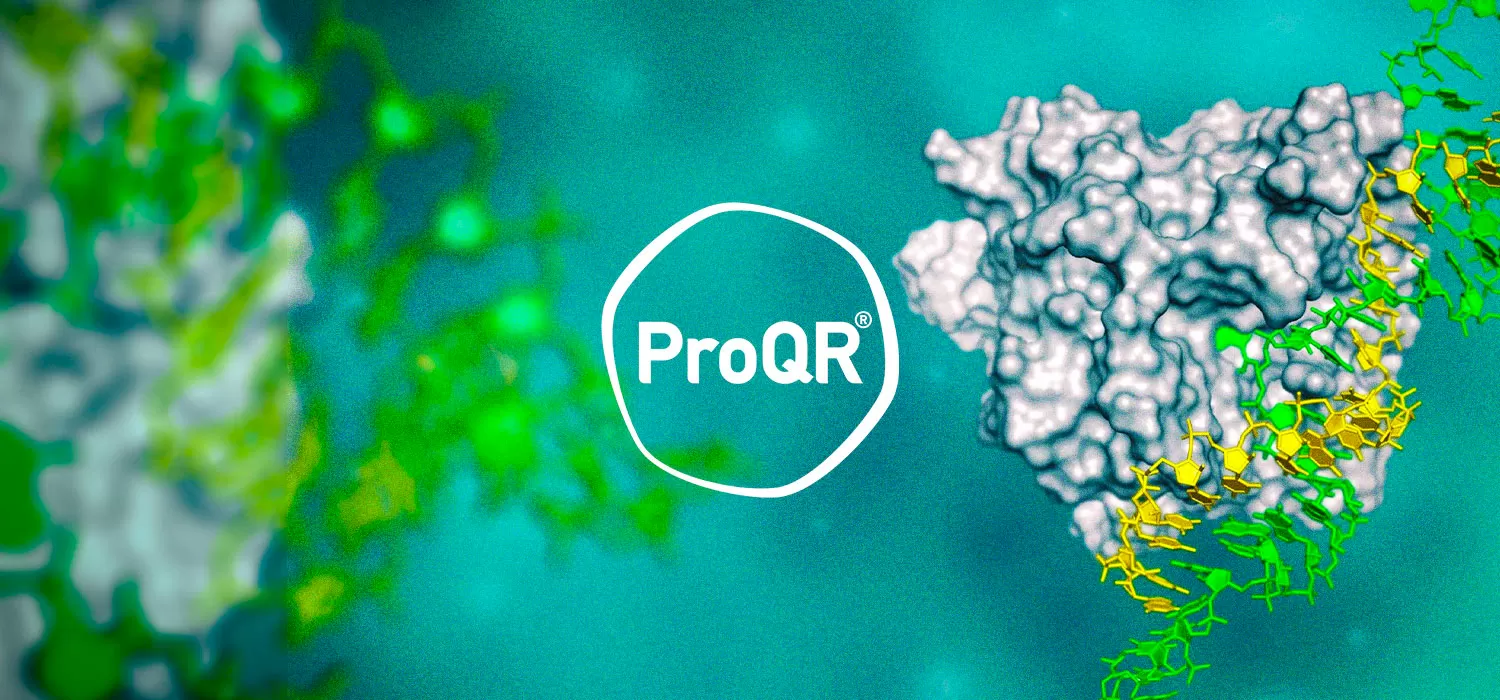RSRT Collaborates with ProQR to Bring RNA Editing to the Clinic

For 14 years, the Rett Syndrome Research Trust (RSRT) has been funding cutting-edge genomic approaches to treating Rett syndrome. One of these approaches is RNA editing. Now, a new collaboration between RSRT and the biotechnology company ProQR Therapeutics is poised to take RNA editing to the clinic.
Rett syndrome is caused by mutations in MECP2, a gene that codes for a protein needed for brain function. In our cells, DNA is the master copy of cellular instructions. To make proteins based off of the DNA sequence, a cell copies a gene sequence from DNA into a related genetic material called messenger RNA (mRNA). Protein-making machinery use mRNA as instructions to make a specific protein. If there are mutations in the DNA sequence, they will be copied over to the mRNA sequence.
Our cells also naturally have proteins known as ADAR (Adenosine Deaminases Acting on RNA) that can edit the sequence of mRNA. In RNA editing, researchers harness these naturally-occurring ADAR proteins to make specific changes to mRNA. This allows editing to occur at the mRNA level rather than at the DNA level. Since ADAR editing of MECP2 mRNA targets the underlying genetic mutation causing Rett syndrome, it offers a path toward restoring normal cell function without changing DNA.
Pete Beal at UC Davis has been studying RNA biochemistry and ADAR for over 25 years. Since 2018, RSRT has funded Beal to apply his expertise to finding ways to use ADAR to correct mutations that cause Rett syndrome.
“For several years, my lab has been using a combination of structure-guided design and screening to find strategies to target ADAR to common Rett mutations and make it work efficiently,” says Beal. “What we need to do now is take the information we’ve generated in our academic lab and leap from these basic science discoveries to creating a therapeutic.”
Beal decided it was time to bring together RSRT’s RNA editing work and ProQR’s expertise in translating basic science into medicines.
“We have a long-lasting collaboration with Pete to really understand the ADAR system that underlies the technology we use at ProQR. It was a natural step to work together on Rett syndrome,” says ProQR co-founder and CSO Gerard Platenburg. “Pete brings the academic knowledge and we bring the clinical development knowledge. It’s really complementary.”
“ProQR is an ideal partner for RSRT,” says Robert Deans, CTO and Head of Research at RSRT. “They have the expertise in translation and they also share our values. Pete has been such a guiding light for us to find people that we can work with so harmoniously.”
Beal’s lab and ProQR are collaborating to optimize a therapeutic molecule that recruits ADAR to the site of a common Rett mutation. ProQR will focus on evaluating candidate molecules in mice with a human version of MECP2, a research resource created by RSRT. ProQR’s goal: efficient editing and restoring the levels of healthy MECP2.
“One of the most important things in drug development is to have models that can provide a translational platform of the scientific idea. The work RSRT has done in creating cell lines and animal models is incredibly valuable for the progression to clinical trials,” says Platenburg. “It gives us a flying start.”
Once a target molecule is refined, ProQR intends to advance it to a clinical trial. The researchers are optimistic that RNA editing will prove to be a useful approach to treating Rett syndrome.
“In Rett syndrome, the dosage of MECP2 is crucial. With RNA editing, you are using the cell's natural regulation system to get the precise expression level,” says Platenburg.
Beal is excited about the delivery advantages of RNA editing.
“RNA editing is using an enzyme that already exists in our cells,” says Beal. “So, we don’t need to worry about how to get the protein into the cells or potentially triggering an immune reaction like we do with other editing approaches. We have research showing that you can get RNA-editing therapeutics into the central nervous system with an injection into the brain or the spinal column without relying on viruses, lipid nanoparticles, or other complex delivery systems. This makes it a really exciting time for the field of RNA editing.”
In addition to funding the collaboration on RNA editing, RSRT continues to invest in other genomic approaches for Rett syndrome, including gene therapy and genome editing.
“At RSRT, we take an approach of letting all the flowers bloom,” says Deans. “We are trying to advance multiple approaches in parallel at once. We get a lot of knowledge and cross-learning by comparing data from different treatment approaches. Ultimately, we are beholden to Rett patients and their families, not any one technology.”


